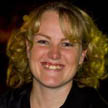I’m a Scientist is like school science lessons meet the X Factor! School students choose which scientist gets a prize of $1000 to communicate their work.
Scientists and students talk on this website. They both break down barriers, have fun and learn. But only the students get to vote.
This zone is the Disease Zone. It has scientists studying the causes and processes of illness . Who gets the prize? YOU decide!









There’s a lot of detail on cloning in our answer to this question; is there anything specific you wanted to know about cloning beyond that?
0
fantastic question
I found out that the word “clone” came from the Greek word “klon”. Plant physiologist Herbert Webber first started to use the word clone in 1903 in relation to growing new plants using cuttings, bulbs or buds (so growing a plant that is like a copy of their parent).
A clone means a cell, a group of cells or an organism that is genetically identical to another cell/organism. Identical twins are clones, they have the same DNA! They started out as one fertilised egg that then divided into 2 separate embryos, but all having the same DNA in each cell.
As you know, to get a new animal or person, you have to combine 1 female egg and 1 male sperm. So you get half the DNA from mum and half the DNA from dad. That means you’re not creating a clone, because the DNA in the new animal/person is not exactly the same as where it came from!
So……if you would like to clone an animal for example (which will look exactly the same as the animal from which you took the DNA) you have to do these steps:
1. take 1 cell from the animal you want to clone (but NOT an egg or sperm cell, any other cell is fine)
2. isolate the DNA from the animal cell (add some chemicals that will break open the cell membrane and then you can extract the DNA)
3. take a donor egg
4. remove the nucleus that contains the donor egg DNA (they do this by sucking the nucleus out using a needle and a microscope because it’s so small)
5. inject the DNA you isolated from your animal cell into the donor egg (which no longer has its own DNA)
6. the donor egg will start to divide and now every cell will have the exact same DNA like the animal you took it from!
There’s good 2 minute Youtube video showing you the process of sucking the nucleus our and injecting new DNA
But…….it doesn’t alway work. For Dolly the sheep, the first cloned animal in the world, it took 277 eggs to try. Out of these 277 eggs, they only got 29 living embryos. They implanted the embryos in female sheep, but only 3 lambs were born. And only Dolly survived…..
It’s a great technique that could cure many human diseases, but all governments around the world limit researchers to use cloning for finding a disease cure. I’m sure you guys can ask your teacher about that problem, great topic for a classroom discussion (looking at the pros and cons)
0
Dear Sarahb; Wow, now you like to get into the genetic engineering?! I will describe only the basics of cloning as Natasha has explained well already.
The cloning methods are collectively called as ‘Recombinant DNA technology’ or simply ‘genetic engineering’. The basics are as follows and cloning of DNA from any organism go through the following five basic steps; These are from the Biochemistry textbook I teach at the university, only in simpler words.
1. Cutting DNA at the exact location ; very special enzymes are used for this cutting.
2. Selecting a small molecule of DNA called cloning vectors(vector is a delivery agent)
3. Joining two DNA pieces(the vector and DNA to be cloned); now it is called ‘Recombinant
DNAs’; again special enzymes are used for this joining.
4. Moving the Recombinant DNA into a host cell ; it is for DNA replication
5. Selecting the host cells that contain recombinant DNA
It is simple in principle, isn’t it? However, there is a lot of work involved and one might say “it is interesting!”, while others say “it is boring.” You got to have patience in everything and for genetic engineering also.
0